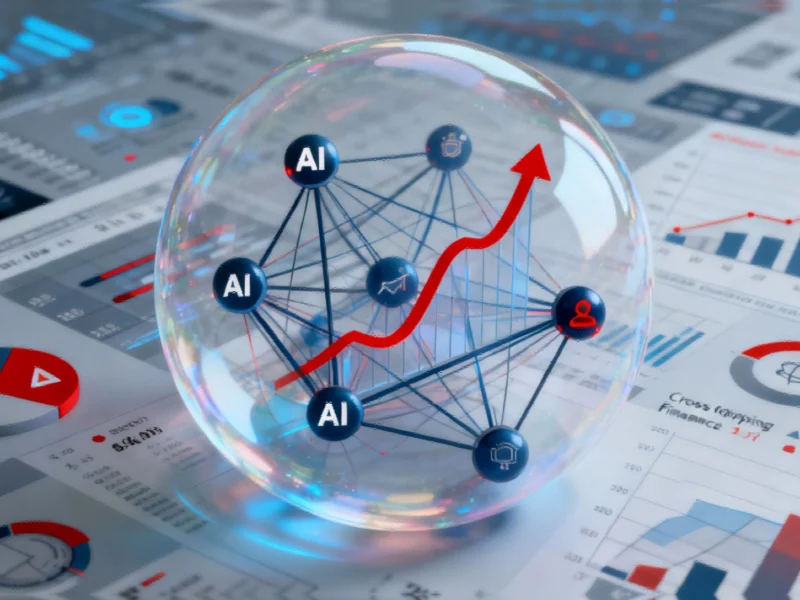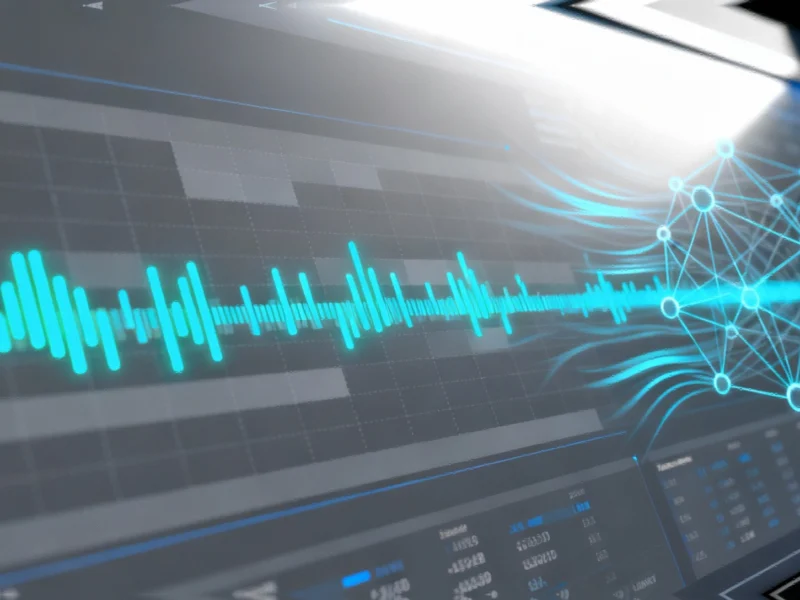The Specter of Irrational Exuberance in Artificial Intelligence
As artificial intelligence valuations reach staggering heights, a growing chorus of economists and industry veterans are drawing parallels to historical investment manias. The current AI boom, which has seen ten lossmaking startups collectively valued at nearly $1 trillion, bears uncomfortable similarities to both the dotcom bubble and 19th century railway speculation frenzies. According to recent analysis featured in industry reports, venture capital has poured $161 billion into AI this year alone, despite few companies demonstrating clear paths to profitability.
The funding mechanisms underpinning this boom reveal complex interdependencies reminiscent of pre-2008 financial instruments. Major tech firms including OpenAI, Nvidia, Oracle, AMD and Broadcom have engaged in cross-cutting vendor financing arrangements that create circular capital flows. This web of financial connections echoes what one analyst described as “the hairball of interconnections” that characterized credit derivatives before the 2008 crisis, raising concerns about concentrated systemic risk.
Cargo Cult Dynamics in Modern Technology
The anthropological concept of “cargo cults” provides a powerful framework for understanding current AI investment patterns. Originally observed in Melanesian islands where inhabitants replicated Western symbols hoping to summon material wealth, the cargo cult metaphor now applies to companies rushing to adopt AI terminology without substantive understanding. As physicist Richard Feynman observed in his critique of “cargo cult science,” following forms without understanding essence leads to empty rituals—building bamboo airplanes that never fly.
This dynamic manifests in corporate environments where 95% of companies report no revenue gains from AI implementations, yet executives feel compelled to announce AI strategies to satisfy investor expectations. The phenomenon extends to infrastructure investments, where companies are racing to build data centers despite Bain estimates suggesting $2 trillion in revenue will be needed to fund these projects by 2030. Recent developments in data center transactions highlight the intense competition for AI infrastructure assets.
Industrial Transformation Versus Financial Speculation
Prominent figures like Jeff Bezos argue the current AI mania differs from purely financial bubbles, characterizing it as an “industrial bubble” that may ultimately benefit society through infrastructure development. This perspective suggests that, similar to the 19th century railway mania that left behind valuable transportation networks, the AI frenzy might create essential digital infrastructure for future innovation.
The comparison extends to technical implementation challenges. As engineers work to optimize AI systems, they’re developing sophisticated engineering solutions for industrial applications. Meanwhile, major partnerships continue to evolve, with recent announcements about AI platform enhancements demonstrating how established tech giants are positioning themselves in the ecosystem.
Systemic Risk and Collective Investment Strategies
University of Buenos Aires professor Francisco Sercovich describes the current environment as “a systemic, strategically mediated form of intra-industry risk-splitting,” comparing it to the Sematech consortium of the late 1980s that pooled corporate and federal capital to stabilize semiconductor research. This coordinated approach reflects recognition that competing with state-backed Chinese AI development requires unprecedented collaboration between American companies and government entities.
The financing mechanisms supporting this ecosystem continue to evolve, with innovative financing and supplier vetting becoming increasingly critical for sustainable growth. However, economists caution that political uncertainty could undermine the scientific advancement that makes these investments viable, referencing concerns that policy changes might “undermine the golden goose of science.”
Potential Catalysts for Market Correction
Several factors could precipitate a reassessment of AI valuations, including rising interest rates, supply chain disruptions, energy constraints, or technological breakthroughs that render current approaches obsolete. The emergence of neurosymbolic AI or cheaper alternatives to existing transformer-based systems, such as those developed by DeepSeek, could dramatically reshape the competitive landscape.
As the International Monetary Fund warns of bubble risks comparable to 1999 dotcom mania, participants in the AI ecosystem face critical questions about sustainable growth versus speculative excess. The cargo cult analogy serves as a reminder that magical thinking—expecting bamboo airplanes to fly—eventually confronts physical reality. While the transformative potential of AI remains undeniable, the path to realizing that potential may prove more turbulent than current valuations suggest.
Based on reporting by {‘uri’: ‘ft.com’, ‘dataType’: ‘news’, ‘title’: ‘Financial Times News’, ‘description’: ‘The best of FT journalism, including breaking news and insight.’, ‘location’: {‘type’: ‘place’, ‘geoNamesId’: ‘2643743’, ‘label’: {‘eng’: ‘London’}, ‘population’: 7556900, ‘lat’: 51.50853, ‘long’: -0.12574, ‘country’: {‘type’: ‘country’, ‘geoNamesId’: ‘2635167’, ‘label’: {‘eng’: ‘United Kingdom’}, ‘population’: 62348447, ‘lat’: 54.75844, ‘long’: -2.69531, ‘area’: 244820, ‘continent’: ‘Europe’}}, ‘locationValidated’: True, ‘ranking’: {‘importanceRank’: 50000, ‘alexaGlobalRank’: 1671, ‘alexaCountryRank’: 1139}}. This article aggregates information from publicly available sources. All trademarks and copyrights belong to their respective owners.



